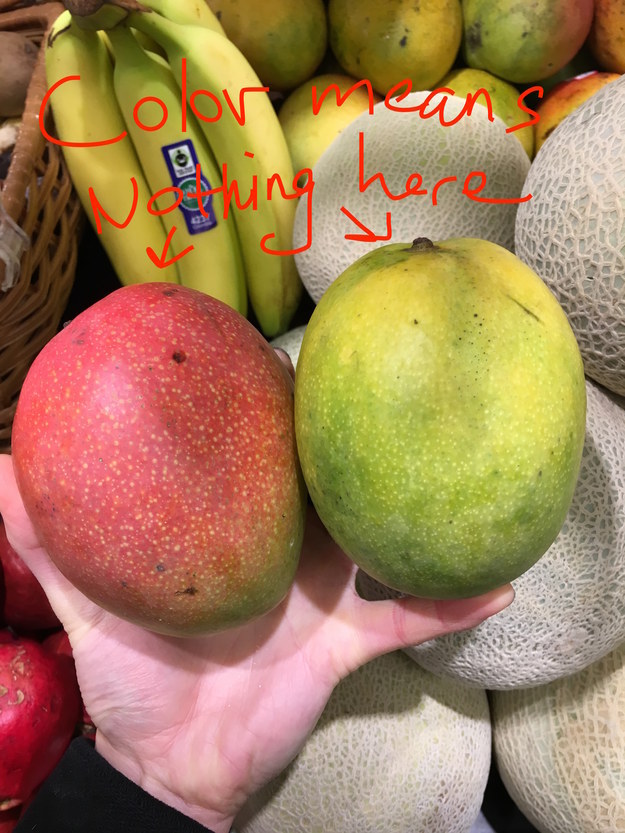1. It’s usually better to opt for smaller fruits and vegetables, because they tend to be sweeter or more savory.
2. For fruits, don’t base your decision on how perfect they might look. Instead, pick them by their weight:Heavier fruits will be juicier.
3. Sometimes, color won’t mean anything at all (like these mangoes).

4. For certain fruits, color is a better indication of ripeness. Example, pineapples.
5. Don’t hesitate to SMELL your fruits. This goes for pineapples, cantaloupe, honeydew, mangoes, and other tropical fruits.
To test for ripeness, smell from the bottom; if it’s a good, solid fruit, it should emit a fairly strong scent. For pineapples, this is usually accompanied by a yellow discoloration that will continue to the top as it ripens.
6. Buy onions that are firm (so very tossable), and have little to no scent.
7. Just like mangoes, color is insignificant when picking snow peas and snap peas. Don’t mind the white spots.
8. But for broccoli, you want darker heads that are tightly compacted.
Cauliflower heads should also be pretty tight and shouldn’t have any darker “sunburned spots” or soft spots.
10. For leafy vegetables with thick stalks, pay attention to both the stalks and the leaves.
11. It’s better to get root vegetables (beets and carrots) with the tops still attached because they’re fresher and sweeter.
12. SOMETIMES, you need to ~feel~ your fruits and veggies. Like, get in there and give them a light squeeze.
13. This goes for avocadoes as well.
14. Artichokes are the most entertaining because the good ones SQUEAK.
15. Fresh new potatoes should be pretty easy to peel.
16. It’s not the end of the world, but try not to buy potatoes that have sprouted.
17. For a ripe cantaloupe, pick one tinted gold underneath the netting.
For honeydew, choose dull over shiny for a riper melon. They should also be pale yellow and not too green. Check squash for their outsides as well: If they’re shiny, they were probably picked too early.
hope this is helpful
Ellen
No comments:
Post a Comment